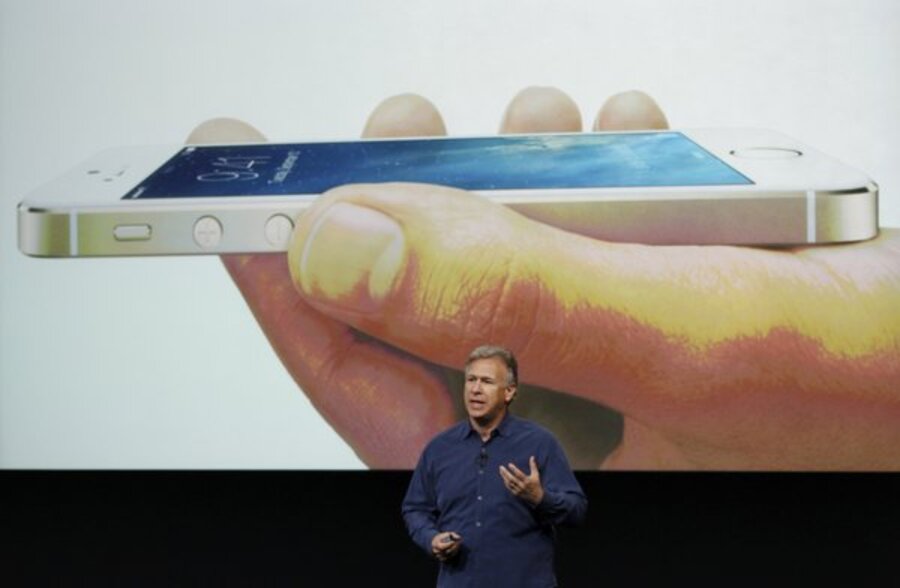iPhone 5S is here: Better camera, new processor, and fingerprint scanner
Loading...
Apple announced the newest iPhone at a media event in Cupertino, Calif., today, unveiling an iPhone 5S that includes a fingerprint scanner, a new dual-flash camera, and a vastly improved processor. The iPhone 5S, which runs the updated iOS 7 operating system, looks almost identical to the iPhone 5 – save for the color scheme: It comes in silver, “space gray,” and gold.
The biggest new feature of the iPhone 5S is the “Touch ID” fingerprint scanner, which is integrated into the phone’s home button. A ring around the button activates the scanner, and the sensor itself reads fingerprints at any angle to an accuracy of 500 points per inch. The technology can unlock the phone (replacing or supplementing the venerable four-digit passcode), and can also be used to authenticate purchases made in iTunes or the App Store. Apple assured users that fingerprint signatures are encrypted, and aren’t available to apps running on the phone. The fingerprints aren’t sent to any servers, either; they’re only stored in the phone itself.
The iPhone 5S also incorporates a fancy new camera, which improves upon the iPhone 5’s already excellent picture-taking capabilities. The new camera is still 8 megapixels, but the sensor is 15 percent larger than the iPhone 5’s sensor, which means it’ll take better pictures in low light. It also includes two LED flashes, one that gives off bright white light and another that gives off a warm amber light. The iPhone 5S can combine the two flashes to get the right kind of illumination for a particular shot – which means photos won’t look as washed-out or unnaturally tinted.
The new camera can also take as many as 10 shots per second, and will automatically select the sharpest picture out of a series. The iPhone 5S’s camera can record 720p HD video at a rate of 120 frames per second, allowing for dramatic slow-motion shots.
Under the hood, the iPhone 5S runs on a new “A7” chip, which Apple billed as “up to twice as fast” as the chip found in the iPhone 5. The A7 chip is the first 64-bit smart-phone system, which means it can use the phone’s memory more effectively. (Graphics-intensive apps, such as the Infinity Blade III game demoed at Apple’s event, should run especially well.)
The new phone also incorporates a “motion coprocessor,” which continually tracks motion data from the phone’s compass, accelerometer, and gyroscope. It can tell if a user is walking, driving, or stationary, and will likely be used in all sorts of context-sensitive apps.
Apple said the iPhone 5S’s battery will last for 10 hours of talk time on a 3G network, 10 hours of watching video, and 250 hours of standby time.
The phone will be available starting September 20th. Pre-orders kick off September 13. The 16GB model will cost $199, the 32GB model will cost $299, and the 64GB model will cost $399 (with a two-year contract, of course). Apple says that before the end of the year the iPhone 5S will have reached 270 carriers in more than 100 countries.
For more tech news, follow Jeff on Twitter: @jeffwardbailey.








